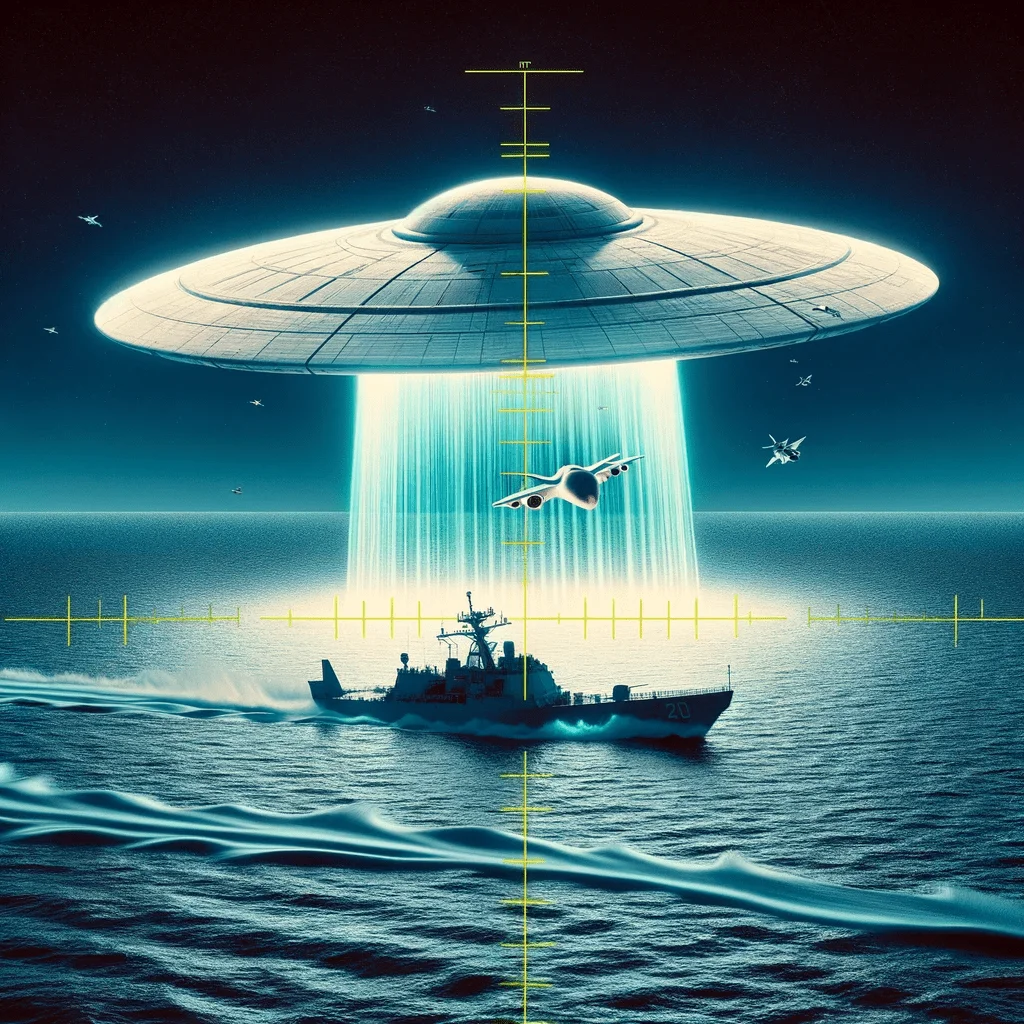The “FLIR1” UFO Encounter

FLIR1 is one of three declassified videos released by the U.S. Department of Defense that depicts an encounter between U.S. Navy pilots and an unidentified flying object. This incident, which happened in 2004 off the coast of San Diego, has become one of the most discussed and scrutinized UAP (Unidentified Aerial Phenomena) sightings in recent memory, with both official and unofficial sources contributing to a wide range of theories and speculations.
FLIR1 refers to the technology used to capture the footage – a Forward Looking InfraRed camera. This particular sighting involved the USS Nimitz carrier strike group, including pilots from the VFA-41 Black Aces, a U.S. Navy strike fighter squadron. Commander David Fravor and Lieutenant Commander Jim Slaight are the two most often credited with the sighting, as they were on a routine training mission when the USS Princeton, an accompanying ship, asked them to investigate a mysterious object.
Fravor and Slaight have both reported their accounts of the event, describing the UAP as a 40-foot long, white, oblong shape hovering above the water before it rapidly ascended and began mirroring their movements. In interviews, Fravor described the object as defying the laws of physics, accelerating, decelerating, and making sharp turns at high speeds beyond the capabilities of known human aircraft.
Beyond the pilots themselves, this incident has been examined by various agencies and individuals. The Pentagon’s Advanced Aerospace Threat Identification Program (AATIP), a secretive program investigating UAPs, had taken interest in this sighting. Luis Elizondo, the former head of AATIP, has since become a significant figure in pushing for more government transparency on UAPs, often citing the FLIR1 footage as a compelling case for further investigation.
One of the books written on this topic is “Skinwalkers at the Pentagon: An Insiders’ Account of the Secret Government UFO Program” by James T. Lacatski, Colm Kelleher, and George Knapp. The book details the establishment and findings of the AATIP and discusses various UAP incidents, including the Nimitz encounter. The authors provide a comprehensive look at the government’s response to these phenomena, as well as the ongoing struggle to achieve transparency and further scientific inquiry.
Forward-Looking Infrared (FLIR) cameras, also known as thermal imaging cameras, are devices that visualize heat by detecting infrared radiation and then creating images based on this data. This technology is valuable because it allows the viewer to perceive variations in temperature, which is not possible with the human eye.
In the context of an aircraft, the FLIR system is often mounted in a turret under the aircraft and provides the pilot with a heat picture of the environment ahead, regardless of lighting conditions or obstacles like smoke or fog. The FLIR system is particularly useful for night vision, search and rescue operations, surveillance, and targeting in military applications.
The operation of a FLIR camera is based on the principles of infrared radiation, which is emitted by all objects with a temperature above absolute zero. Essentially, the warmer an object is, the more infrared radiation it emits.
- Infrared Detection: The camera’s lens focuses the infrared light emitted by all the objects in view. This focused light is scanned by a phased array of infrared-detector elements. The detector elements create a detailed temperature pattern called a thermogram, which is obtained from the amount of infrared energy emitted by an object. It only takes about one-thirtieth of a second for the detector array to obtain the temperature information to create the thermogram.
- Thermogram to Electric Impulses: The thermogram created by the detector elements is translated into electric impulses.
- Impulse Translation: The impulses are sent to a signal-processing unit, a circuit board with a dedicated chip that translates the information from the elements into data for the display.
- Data Display: The signal-processing unit sends the information to the display, where it appears as various colors depending on the intensity of the infrared emission. The combination of all the impulses from all the elements creates the image.
While there are various types of FLIR cameras designed for specific uses, the core principles of their operation remain the same. They are an essential tool in many industries and have a broad range of applications beyond military and aviation use, such as firefighting, surveillance, HVAC inspections, and even medical diagnostic procedures.
Released by the Department of Defense and published by The New York Times in 2017 was “FLIR1.” video, along with “GIMBAL” and “GoFast,” showed encounters between U.S. Navy pilots and Unidentified Aerial Phenomena (UAPs).

